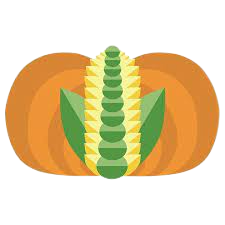Over the past week we've transplanted over 100 seedlings from our greenhouse at the Devonian Botanical Gardens. The seedlings included Brussel Sprouts, Cauliflower, Broccoli, Kale, Cucumber, Squash (Winter Squash, Pumpkin), Basil, Oregano, flowers (Alyssum, Marigold, Meadow Blazingstar), Pepper, and Tomatoes coming out of our ears!
 |
| Tomatoes are taking over Prairie Urban Farm! We had to extend their planting areas into the Parsnip area because there were so many to plant! Everyone loves tomatoes right?... |
We've also directly seeded many more plants in the last week such as Radish, Beet, Carrot, more Pepper, Leek, Corn, Potatoes, and more Cucumber. We still need to get Parsnip, Turnip, Rutabaga, Kholrabi, more Corn, onions, garlic, and flowers into the ground. We planted Potato seeds into our sheet mulched area and are hoping that they're strong enough to grow up through the thick woody mulch layer on top!
 |
| A ladybug crawls on old corn stalks from last year. |
Onion, garlic, and flowers like Marigold and Nasturtium attract predatory insects that feed on bugs that we often categorize as "pests". By providing homes and food for these predatory insects, we help create a natural interaction to help our plants thrive instead of relying on chemical pesticides.
 |
| Janice and Mike planting seeds |
Peas are a type of legume, as are beans and clover. Legumes have helpful bacteria living on their roots called Rhizobia. These bacteria help the Peas take in and use atmospheric Nitrogen that other plants aren't able to access. This Nitrogen is then shared back into the soil as the Pea plant decomposes, becoming available to other plants around it. Legumes are often referred to as, "Green Manures" because of this Nitrogen they give back to the food system.
 |
| Jeff planting radish seeds |
We will be planting more seeds, shrubs, and trees over the next couple weeks. Come out to the farm and join us! We always appreciate meeting new volunteers and having help at the farm.



